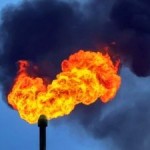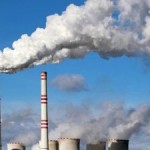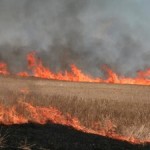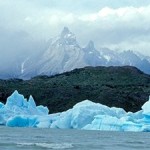Over past decades, many areas of the forested Amazon basin have become a patchwork of farms, pastures and second-growth forest as people have moved in and cleared land – but now many are moving out, in search of economic opportunities in newly booming Amazonian cities. The resulting depopulation of rural areas, along with spreading road networks and increased drought are causing more and bigger fires to ravage vast stretches, say researchers in a new study.
The study, “Depopulation of Rural Landscapes Exacerbates Fire Activity in the Western Amazon”, focusing on the Peruvian Amazon, is the latest to suggest that land-use changes and other factors, including possibly climate change, are driving increasingly destructive wildfires in many parts of the earth. An inter-disciplinary team at Columbia University’s Earth Institute has published the paper in the Proceedings of the National Academy of Sciences.
Nearly all fires in the Peruvian Amazon are set by humans seeking to burn woody vegetation off pastures, clear fallow land for planting, and release nutrients back into the soil – millennia-old methods used in many parts of the world. So-called slash-and-burn agriculture got a bad name in recent decades when fast-growing numbers of tropical ranchers and farmers deforested vast areas with fire, leading to massive soil erosion and releases of carbon.
With many now abandoning land or working it only part time in favour of city jobs, some scientists started thinking this might lead to fewer fires. But the study shows the opposite: with fewer people around to control fires, and flammable small trees and grasses quickly taking over uncultivated plots, more blazes are spreading out of control and burning off bigger areas – not only forests but farms, fruit plantations, homes and villages.
“Farmers are often blamed for deforestation and environmental destruction, but they are fairly sophisticated in managing fire – they plan when, how and where to burn the land,” said lead author María Uriarte, a forest ecologist in Columbia’s Department of Ecology, Evolution and Environmental Biology. “However, when you have more fallow land and fewer people around to work at control, that combination generates these big fires.”
Between 1993 and 2007 (the year of the latest census), the population of the Peruvian Amazon went up over 20 percent, to some 7.5 million. But urban areas grew much faster; so many people moved from the countryside to the cities, rural populations of some provinces saw declines of up to 60 percent. This is true around the frontier city of Pucallpa – now Peru’s fourth-largest municipality, and a trading hub for the western Amazon. Much of the Brazilian Amazon is undergoing a similar transformation. Rural populations in almost all nine nations comprising the Amazon basin, which also include Venezuela, Colombia and Bolivia, are projected also to decline, even if cities grow.
Ever denser spider-webs of roads are spreading from these cities, making previously inaccessible places reachable for logging, farming and other activities. On top of this, the Amazon suffered massive droughts in 2005 and 2010 – events previously thought to take place only once every 100 years. In lands already made more flammable by logging of humid old-growth rainforests, this led in 2005 to fires that burned some 800,000 acres, by conservative estimates, in the Brazilian state of Acre and around Pucallpa alone. A 2011 study by members of the Columbia team indicates that the droughts are connected to fluctuations in temperature over the faraway Atlantic Ocean; some models project they will get worse as global climate warms.
To assess the prevalence and causes of uncontrolled blazes, the researchers combined region-wide climate data, remote-sensing images of land use and fires, and field interviews with farmers around Pucallpa – often conducted amid fires that were still burning. Not surprisingly, they found that dry conditions and proximity to roads correlated with increased fires. But fires increased most powerfully both in frequency and size where rural population declines were the steepest – an indication that a certain level of human presence, with neighbours watching out for each other, helped damp down destructive outbreaks, while fires took over human-altered landscapes once the people thinned out.
“Projected declines in rural population across Amazon countries and expansion of road infrastructure combined with more frequent droughts predicted by some global climate models presage greater damage from fires in the future,” the thors say.
However, they see hope in some recent developments. These include their own work showing that big droughts can be predicted using observations of sea-surface temperatures, which could lead to early warnings of dry seasons to come. Also, many Amazonian lands are now being taken up by big plantations of oil palms, which are not so susceptible to fire. Unfortunately, a separate study by team members last year showed that the plantations are most often being carved out of still-intact forest – not the more flammable former small farms – but team members say government policies encouraging conversion of small farms to oil palm could help.
The other authors of the study are Miguel Pinedo-Vaquez, Ruth DeFries and Victor Gutierrez-Velez, also of Columbia’s Department of Ecology, Evolution and Environmental Biology; Katia Fernandes and Walter Baethgen, from Columbia’s International Research Institute for Climate and Society; and Christine Padoch, of the New York Botanical Garden. Padoch and Pinedo-Vaquez are also associated with the Center for International Forestry Research.
Check the following link to read/download the Full Study:
http://www.pnas.org/content/early/2012/12/05/1215567110.abstract
Source: The Earth Institute, Columbia University.








